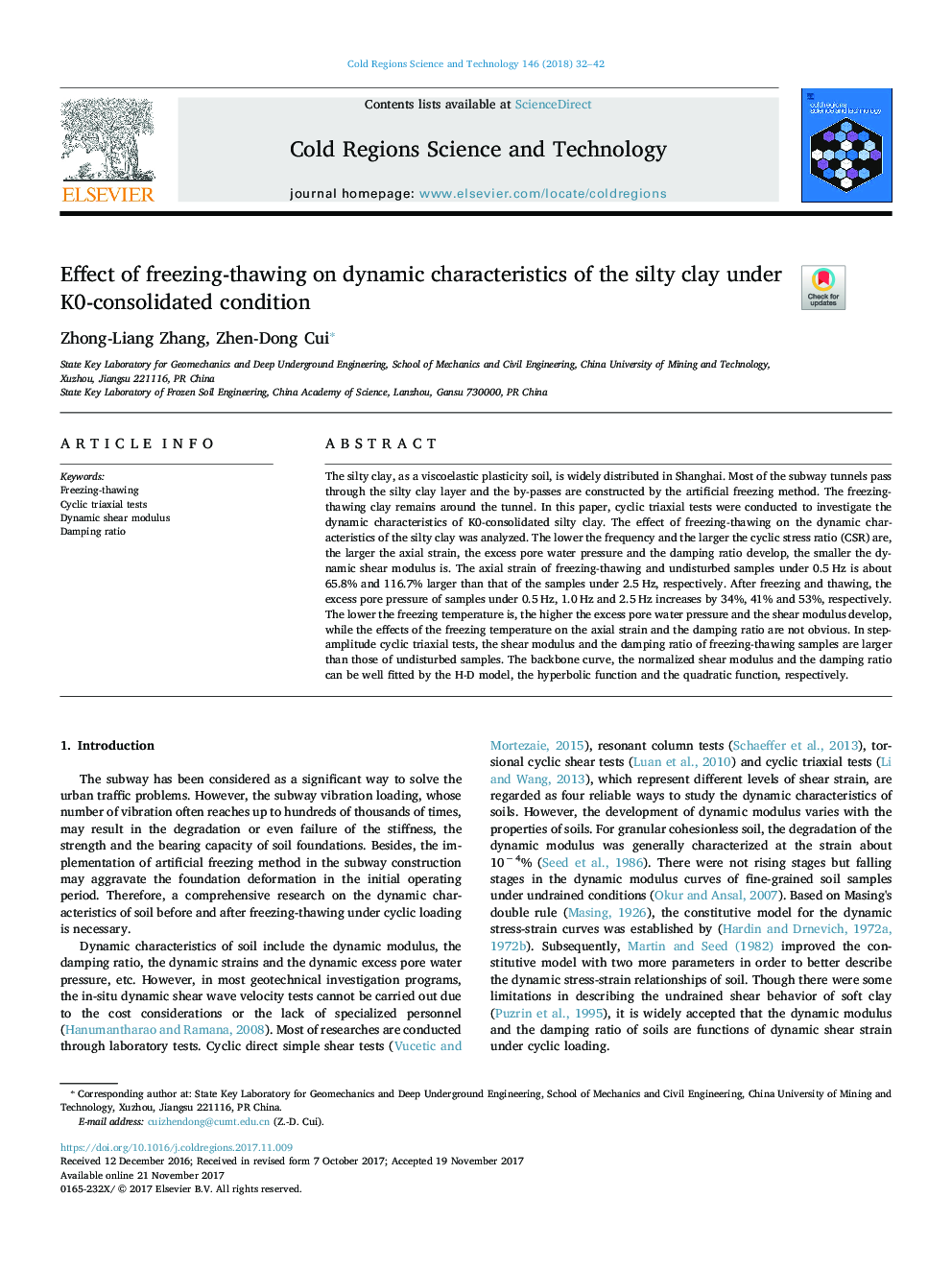| کد مقاله | کد نشریه | سال انتشار | مقاله انگلیسی | نسخه تمام متن |
|---|---|---|---|---|
| 8906570 | 1634418 | 2018 | 11 صفحه PDF | دانلود رایگان |
عنوان انگلیسی مقاله ISI
Effect of freezing-thawing on dynamic characteristics of the silty clay under K0-consolidated condition
دانلود مقاله + سفارش ترجمه
دانلود مقاله ISI انگلیسی
رایگان برای ایرانیان
کلمات کلیدی
موضوعات مرتبط
مهندسی و علوم پایه
علوم زمین و سیارات
علوم زمین و سیاره ای (عمومی)
پیش نمایش صفحه اول مقاله

چکیده انگلیسی
The silty clay, as a viscoelastic plasticity soil, is widely distributed in Shanghai. Most of the subway tunnels pass through the silty clay layer and the by-passes are constructed by the artificial freezing method. The freezing-thawing clay remains around the tunnel. In this paper, cyclic triaxial tests were conducted to investigate the dynamic characteristics of K0-consolidated silty clay. The effect of freezing-thawing on the dynamic characteristics of the silty clay was analyzed. The lower the frequency and the larger the cyclic stress ratio (CSR) are, the larger the axial strain, the excess pore water pressure and the damping ratio develop, the smaller the dynamic shear modulus is. The axial strain of freezing-thawing and undisturbed samples under 0.5Â Hz is about 65.8% and 116.7% larger than that of the samples under 2.5Â Hz, respectively. After freezing and thawing, the excess pore pressure of samples under 0.5Â Hz, 1.0Â Hz and 2.5Â Hz increases by 34%, 41% and 53%, respectively. The lower the freezing temperature is, the higher the excess pore water pressure and the shear modulus develop, while the effects of the freezing temperature on the axial strain and the damping ratio are not obvious. In step-amplitude cyclic triaxial tests, the shear modulus and the damping ratio of freezing-thawing samples are larger than those of undisturbed samples. The backbone curve, the normalized shear modulus and the damping ratio can be well fitted by the H-D model, the hyperbolic function and the quadratic function, respectively.
ناشر
Database: Elsevier - ScienceDirect (ساینس دایرکت)
Journal: Cold Regions Science and Technology - Volume 146, February 2018, Pages 32-42
Journal: Cold Regions Science and Technology - Volume 146, February 2018, Pages 32-42
نویسندگان
Zhong-Liang Zhang, Zhen-Dong Cui,